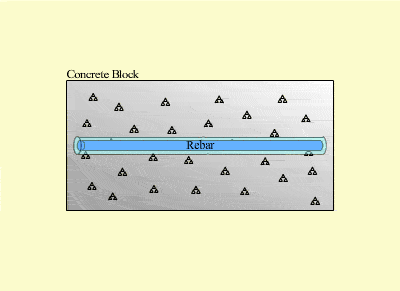Case 1
Navigation
- Introduction
- Causes of Defects
- Good Practices
- Standards
- Maintenance and Diagnostics
- Remedial
- Similar Cases
- References
Cause of Defects
Carbon dioxide dissolved in moisture enters concrete via capillary action. When concrete carbonates the pH of the pore fluid drops to values where steel is no longer passive.


Chloride penetration or carbon dioxide from the air in combination with moisture and oxygen
- Sodium chloride or calcium chloride are present, along with moisture and oxygen, depassivation of steel occurs and the protective film is broken down and corrosion begins.
- Both cases lower the alkalinity of concrete and creates the conditions for corrosion of reinforcement to take place.
- As the corrosion builds and occupies more space inside the concrete, tremendous force is exerted on the concrete. As the rebar corrodes, its volume increases, causing the concrete to crack and spall.
- Cracking is seen first and if not properly repaired large sections of concrete begin to break away.

- Insufficient concrete cover provided
- Improper detailing of reinforcement at design stage
- Improper handling and placement of concrete and reinforcement at construction stage





Consequence
- Initially hairline cracks will surface. During rain, when water seeps into these cracks, rust might be washed out and cause brown stains along the cracks.
- Eventually, as the rust grows, the concrete covering will be forced off and the reinforcement will be left not only without any remaining protection against rusting, but also without any bond to transfer the tensile stresses which it may carry to the concrete.
- Structural failure will eventually follow.
- If spalled area is not repaired promptly, the structural integrity of the building might be compromised.